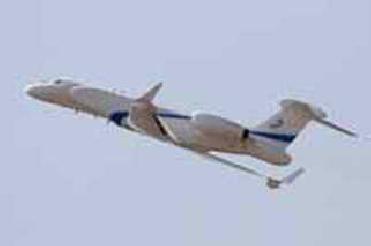
LHC tunnel. CERN image
GENEVA (BNS): After fruitful discussions held at the Chamonix workshop last week, the Large Hadron Collider (LHC) will be back on stream by September this year.
CERN Director General Rolf Heuer said on Monday that the schedule is no doubt the best for the LHC and for the physicists waiting for data. “It is cautious, ensuring that all the necessary work is done on the LHC before we start up, yet it allows physics research to begin this year,” Heuer said.
According to the new schedule, collisions in the LHC will occur in late October. A short technical stop has also been foreseen over the Christmas period. The LHC will then run through to autumn next year, ensuring that the experiments have adequate data to carry out their first new physics analyses and have results to announce in 2010. The new schedule also permits the possible collisions of lead ions in 2010, officials said.
“This new schedule represents a delay of six weeks with respect to the previous schedule, which foresaw the LHC cold at the beginning of July,” Heuer said. The cause of this delay is due to several factors such as implementation of a new enhanced protection system for the busbar and magnet splices; installation of new pressure-relief valves to reduce the collateral damage in case of a repeat incident; application of more stringent safety constraints; and scheduling constraints associated with helium transfer and storage.
Officials said that the enhanced protection system measures the electrical resistance in the cable joints (splices) and is much more sensitive than the system existing on September 19 last.
Officials said that the new pressure relief system had been designed in two phases. The first phase involves installation of relief valves on existing vacuum ports in the whole ring. Calculations have shown that in an incident similar to that of September 19 last, the collateral damage would be minor with this first phase. The second phase involves adding additional relief valves on all the dipole magnets and would guarantee minor collateral damage (to interconnect and super-insulation) in all worst cases over the life of the LHC.
“The management has decided for 2009 to install the additional relief valves on four of the LHC’s eight sectors, at the same time as repairs in the sector damaged last September and other consolidation work already foreseen. The dipoles in the remaining four sectors will be equipped in 2010,” they said.
 Next Article
Next Article













The Indian Air Force, in its flight trials evaluation report submitted before the Defence Ministry l..
view articleAn insight into the Medium Multi-Role Combat Aircraft competition...
view articleSky enthusiasts can now spot the International Space Station (ISS) commanded by Indian-American astr..
view article